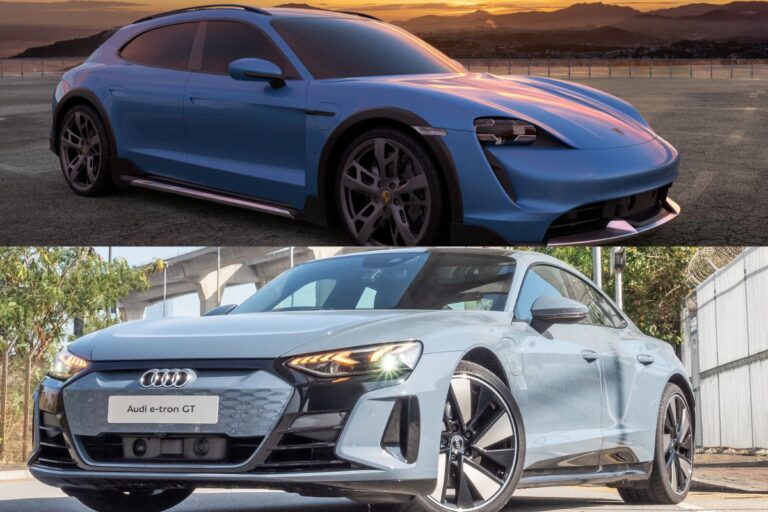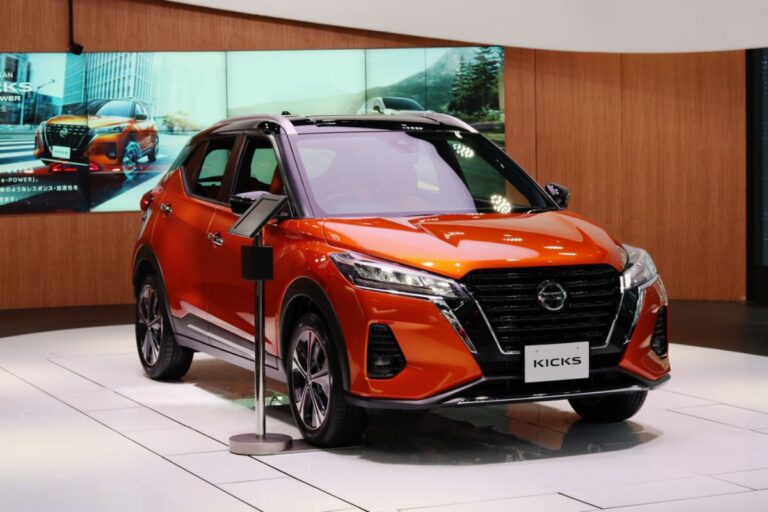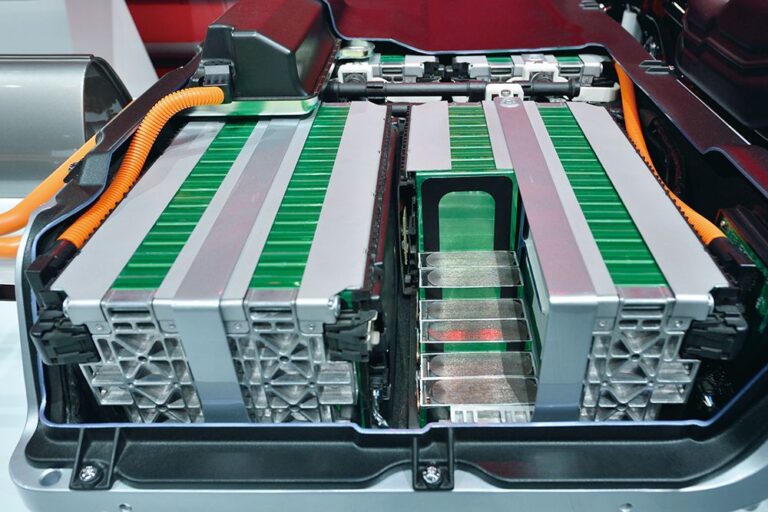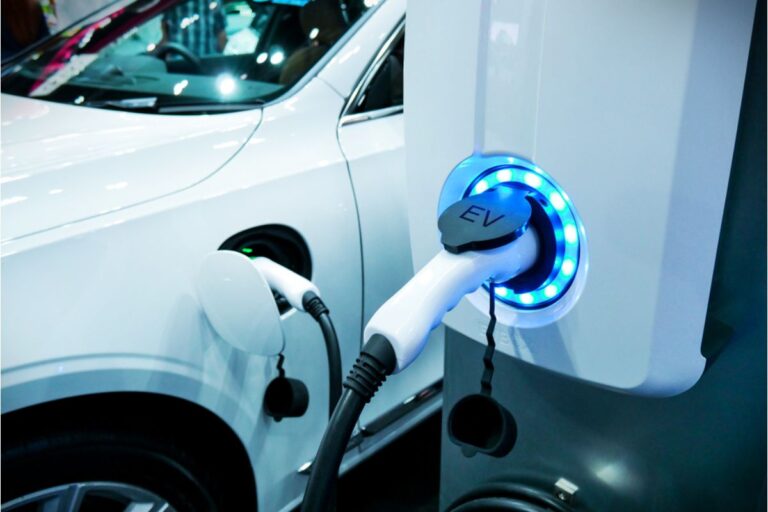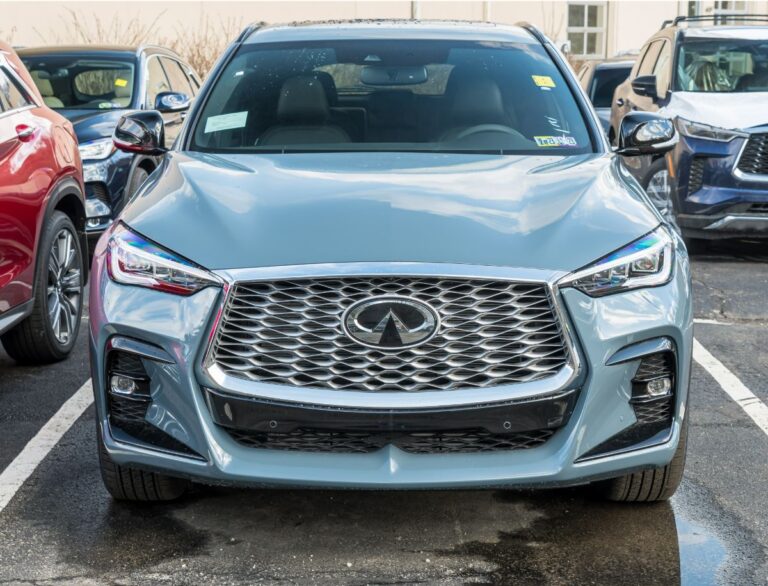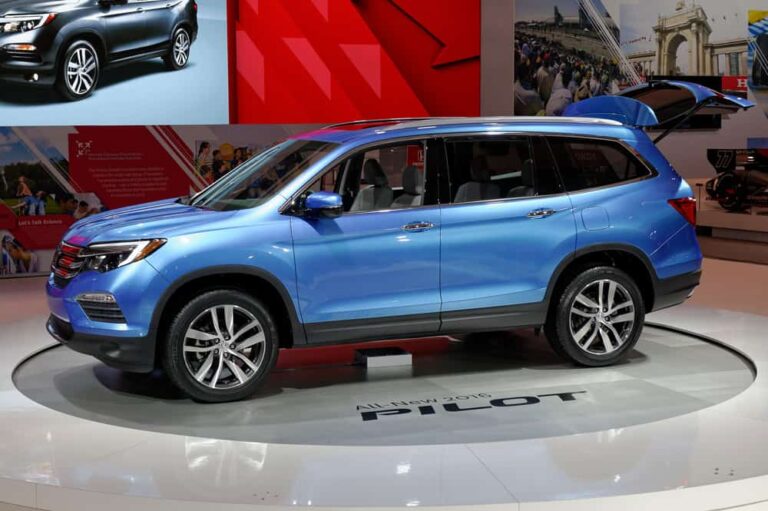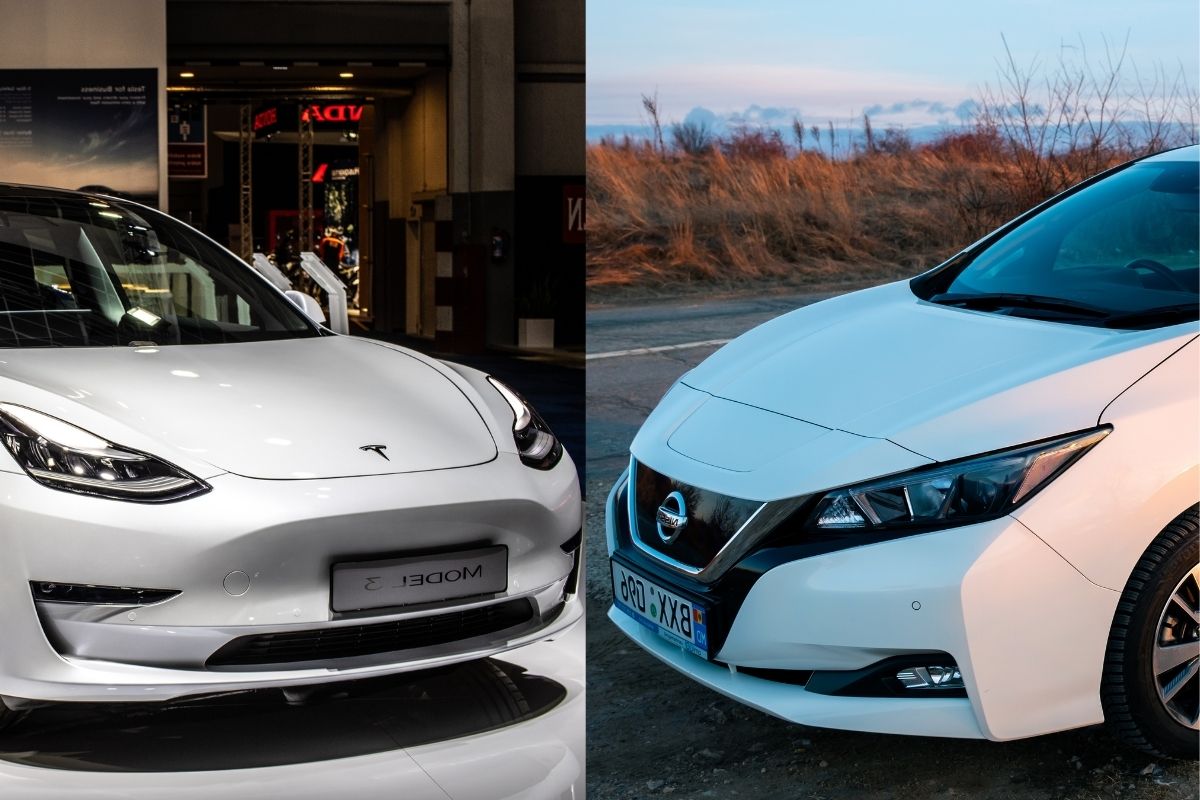
My first experience with an all-electric vehicle was sitting passenger in an earlier version of the Tesla Model 3 and feeling the instant response of the accelerator from a dead stop. There is obvious allure in severing your relationship to the gas pump permanently, but at that moment, I discovered the unexpected thrill of driving all-electric vehicles.
Tesla and the Nissan Leaf are both established product lines in this field, representing accessible options for those who want to enjoy semi-autonomous driving, freedom from gasoline, and an attractive compact EV.
What Makes a Tesla Model 3

Tesla’s answer to providing an excellent daily driving electric vehicle without the luxury price tag, the Model 3 provides best-in-class range and a host of high-tech features in a sleek, minimalist package. Tesla is the biggest name in the EV market for good reason. Their charging station network is more extensive than any others, and they offer industry-leading semi-autonomous driving features.
They consistently earn top safety marks, a must for those considering trying out those automated driving features for the first time. The Model 3’s design speaks to a future where all seats in a car are passenger spots, and the vehicle itself takes over the burden of driving.
Cost Range: $46,440-$60,440
Performance: With two independent motors offering AWD, 20” Uberturbine wheels, and performance brakes, the Model 3 offers responsive acceleration and responsive steering. Its low center of gravity helps it stick firmly to the road. The acceleration ranges from 5.1 seconds in a 0-60 test with the Long-Range model to a zippy 3.5 seconds in the Performance Edition. Both are more than enough to navigate a bustling morning commute.
Range, Battery, and Efficiency: The Model 3 offers an industry-leading 272-358 mile range on a full battery. It gets an EPA-estimated 113-141 MPGe, combined. At a Supercharger Station (Tesla’s network), you can charge in just 30 minutes.
Interior: The streamlined, minimalist interior with its darkly-tinted all-glass roof offers futuristic appeal. Lots of cubbies in the cabin provide you space to tuck away your stuff. The Model 3 has 43.0 cubic feet of available cargo space, with the rear seats folded flat. Speaking of rear seats, these would be a little cramped for adult passengers.
Technology: An impressively sized, 15.0” infotainment screen mounts vertically to the center of the uncluttered dash. Nearly every function in the car runs through that screen, including the gauges, which some drivers may find frustrating. Your smartphone can serve as your key and access all driver control functions, including Navigate, autopilot, Summon, Autopark, and Auto lane change.
Navigation, Bluetooth, and USB connectivity come standard, and there are two wireless phone chargers in the center console. Don’t expect access to Apple CarPlay or Android Auto in a Tesla. Still, you can enjoy access to entertainment options like Netflix, Youtube, and an assortment of games that only function when the car is not driving.
Safety: With industry-leading automation and a 5 star NHTSA Overall Safety Rating, Tesla has put a lot of thought into keeping users safe. They offer automatic emergency braking, lane-departure warning, and adaptive cruise control. Plus, a 360-degree camera system provides 250 m of visual range combined with 12 ultrasonic sensors to detect nearby cars and assist with parking.
Related: Tesla Model 3 vs BMW i4
What Makes a Nissan Leaf
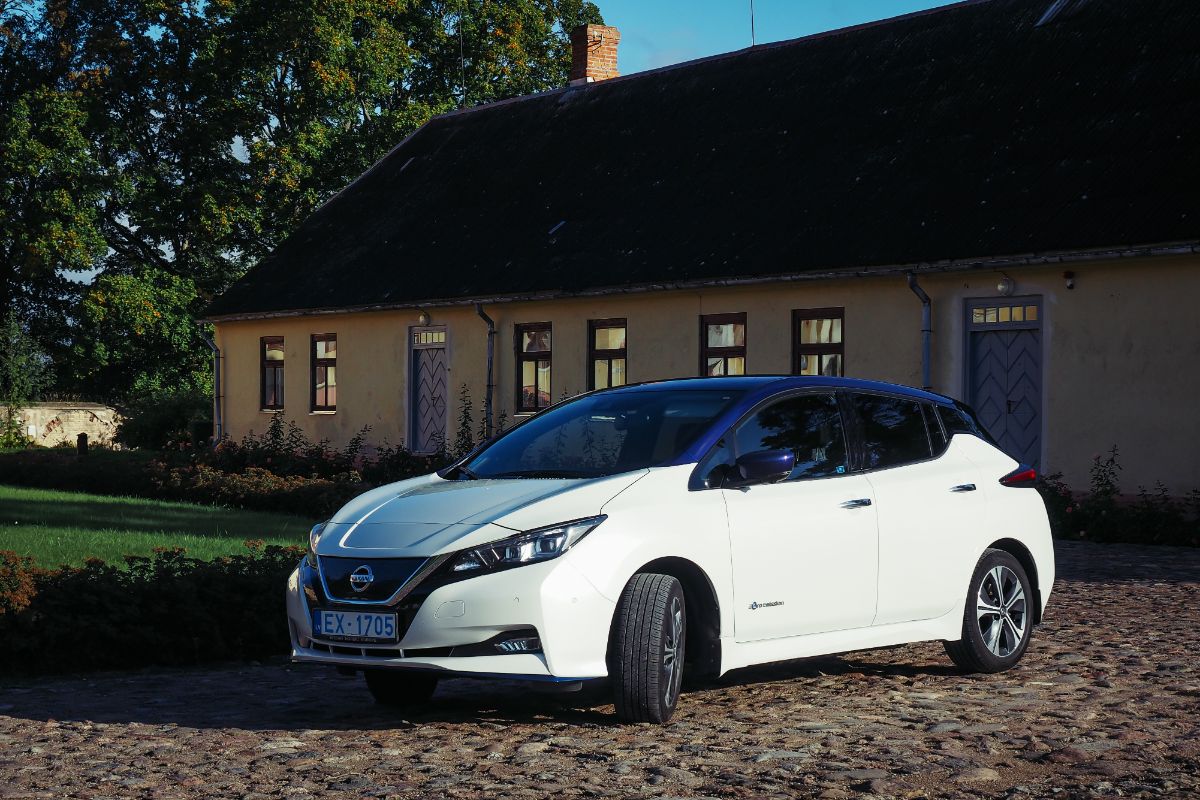
The most affordable EV on the market, the 2022 Nissan Leaf’s range is less competitive, and its semi-autonomous driving suite is only available as an upgrade. Its price tag and interior design give it a competitive edge against the Tesla Model 3. Even the fanciest trim level will cost you less than the base price for a Model 3.
Cost Range: $28,425-$38,425
Performance: More sluggish than the Model 3, the base level engine provides a 0-60 acceleration of 7.4-seconds.
Range, Battery, and Efficiency: DC fast charging comes standard and can charge the Leaf in 45 minutes. The range is less than half the Model 3, at just 150-226 miles on a full charge, and it gets a less impressive 104-123 combined MPGe.
Interior: Though featuring an abundance of black plastic, the Leaf looks attractive inside. It also features a customizable digital readout and an analog gauge cluster that may be more comfortable to some drivers than the all-digital, right-of-driver infotainment system the Model 3 offers. The seats are an improvement, comfy enough to encourage lingering with enough space, front and back, for adult passengers.
Plus plenty of cargo room, enough for up to 19 carry-on suitcases with the rear seats folded.
Technology: The 8.0-inch infotainment system is intuitive to use and, unlike the Model 3, connects with both Android Auto and Apple CarPlay. Upgrade for access to ProPilot Assist semi-autonomous driving features.
Safety: Like Model 3, the Leaf scored 5 stars for Overall Safety Rating from NHTSA.
Key Differences Between the Tesla Model 3 and the Nissan Leaf
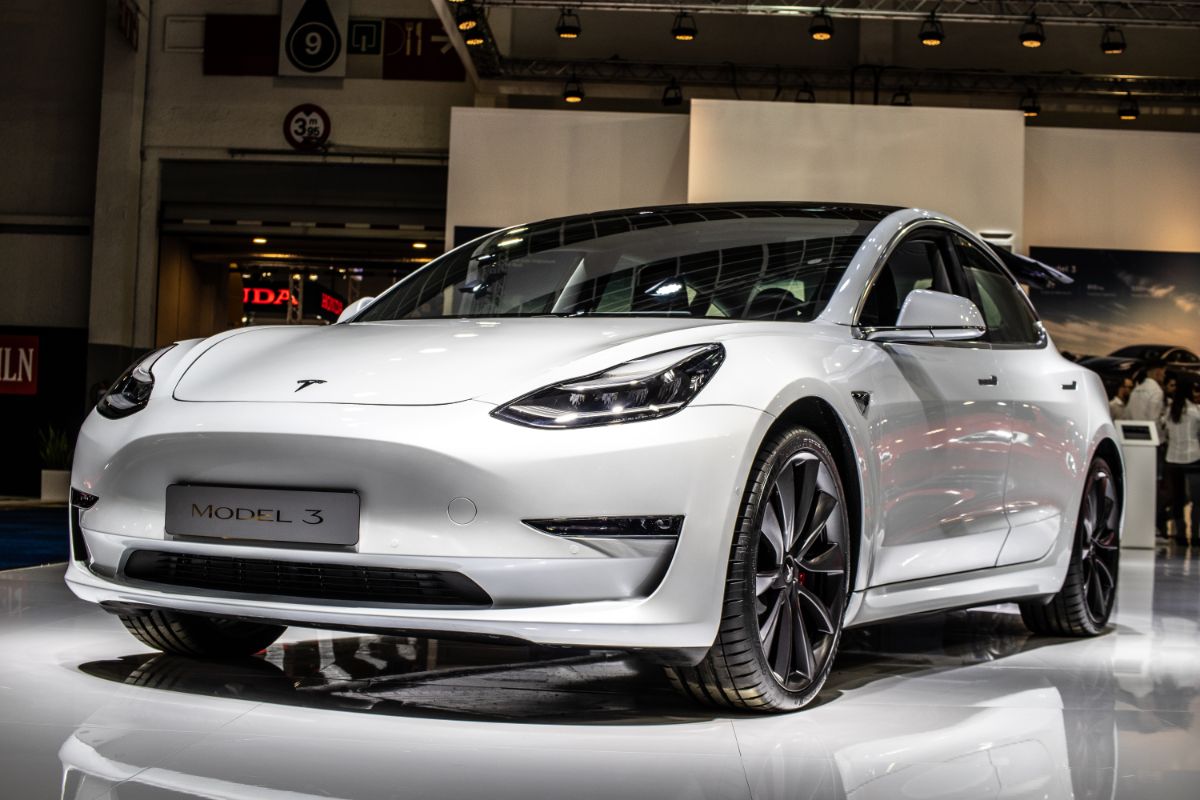
Performance: The Model 3 beats the Leaf on the range, efficiency, horsepower, battery power, and acceleration.
Materials: The Model 3 beats the Leaf on construction quality, with one notable exception. The cabin in the Leaf is quieter than the Model 3.
Design: The minimalist design in the Model 3 and the center-set infotainment center, where most of the driver information and controls are found, may be off-putting—likewise, the cramped rear seats in the Model 3.
Benefits: The Leaf offers an attractive price point, Apple and Android compatibility, and newly introduced semi-autonomous driving features. The Model 3 offers best-in-class semi-autonomous driving with nifty tricks like summoning your car to you with your phone and wireless charging.
History: Both vehicles were introduced in 2017 and over the years have seen improvements that elevated design, semi-autonomous features, performance details, and improved batteries.
And the Winner Is…
Overall, the Tesla Model 3 is the better value for your money, building in an impressive range of features, best-in-class range and semi-autonomous features, and a sleek-looking ride with access to the most expansive rapid charging network in the nation.
But for the cost-conscious, the Nissan Leaf is still a good buy and may be a better choice for those who aren’t ready to give up keeping a quick eyeball on their speedometer or want the convenience of connectivity to their Apple or Android phones.

